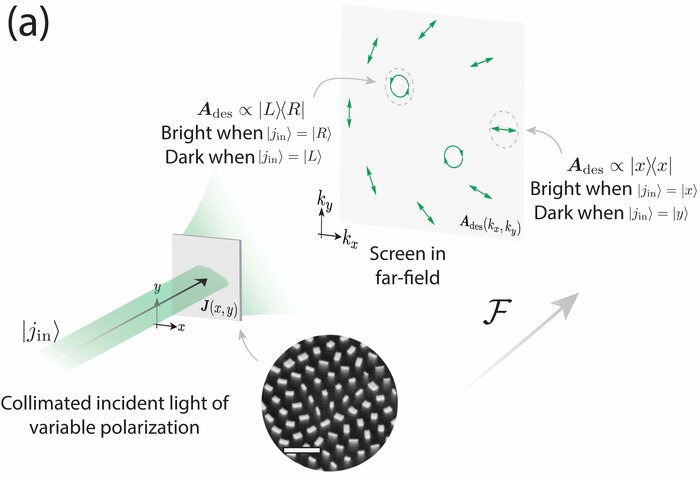For years, researchers at the Harvard John A. Paulson School of Engineering and Applied Sciences (SEAS) have engineered metasurfaces to manipulate light based on its polarization state. That research has contributed to advances in polarization technology—but metasurface technology has proven more powerful than even the researchers themselves realized.
Now, researchers have uncovered hidden potential in these metasurfaces and, in a new paper, demonstrated optical devices that manipulate light’s polarization state with an unprecedented degree of control.
“This research shows that the ability to switch between holographic images that need not be limited to just two polarization states,” said Federico Capasso, the Robert L. Wallace Professor of Applied Physics and Vinton Hayes Senior Research Fellow in Electrical Engineering at SEAS and senior author of the paper. “Our new metasurface can encode an unlimited number of holographic images or manipulate light in virtually infinite number of directions based on a very large number of polarization states.”
The research, published in Science Advances, demonstrates a new way to control polarized light with metasurfaces. This new approach—in which the researchers can engineer a holographic image with a polarization-tunable response across the image itself—could lead to applications in diverse fields including imaging, microscopes, displays, and even astronomy.
“This advancement is general and could be applied to almost any kind of optical system that uses polarized light,” said Noah Rubin, a postdoctoral fellow at SEAS and first author of the paper. “Specifically, this suggests that metasurfaces could be used in new types of laser systems whose output light could be engineered based on light’s polarization state, or perhaps even in telescope systems where similar types of optics are already being used to aid in the detection of Earth-like exoplanets.”
“Holography has always been a popular technique to record and display information,” said Aun Zaidi, a graduate student at SEAS and co-lead author of the paper. “We have taken a fundamental principle of holography and generalized it in a way that greatly expands the information capacity of this rather old technique.”
Next, the researchers aim to understand these devices better, including how they could be used in real-world applications.
Technique makes more efficient, independent holograms
More information:
Noah A. Rubin et al, Jones matrix holography with metasurfaces, Science Advances (2021). DOI: 10.1126/sciadv.abg7488
The Harvard Office of Technology Development has protected the intellectual property relating to this project and is exploring commercialization opportunities.
Provided by
Harvard John A. Paulson School of Engineering and Applied Sciences
Citation:
Metasurfaces control polarized light at will (2021, August 14)
retrieved 14 August 2021
from https://phys.org/news/2021-08-metasurfaces-polarized.html
This document is subject to copyright. Apart from any fair dealing for the purpose of private study or research, no
part may be reproduced without the written permission. The content is provided for information purposes only.



